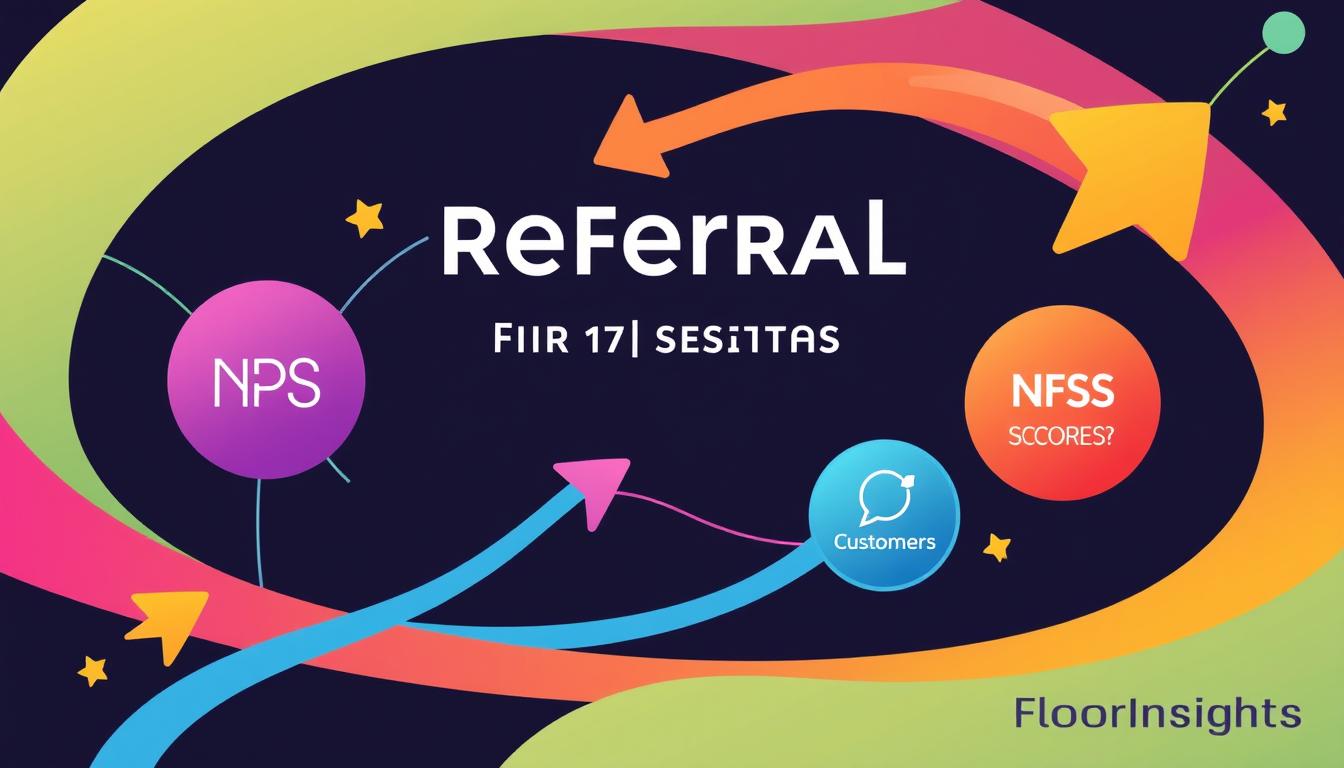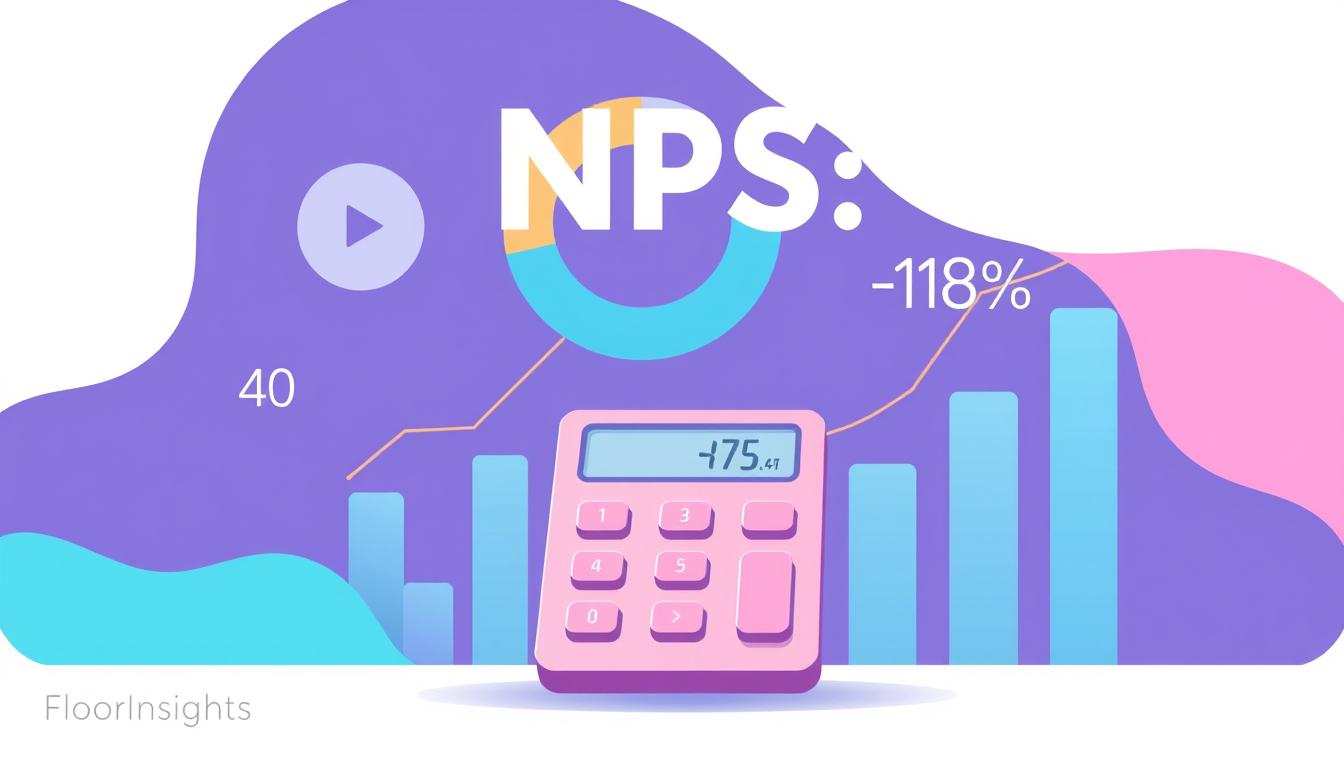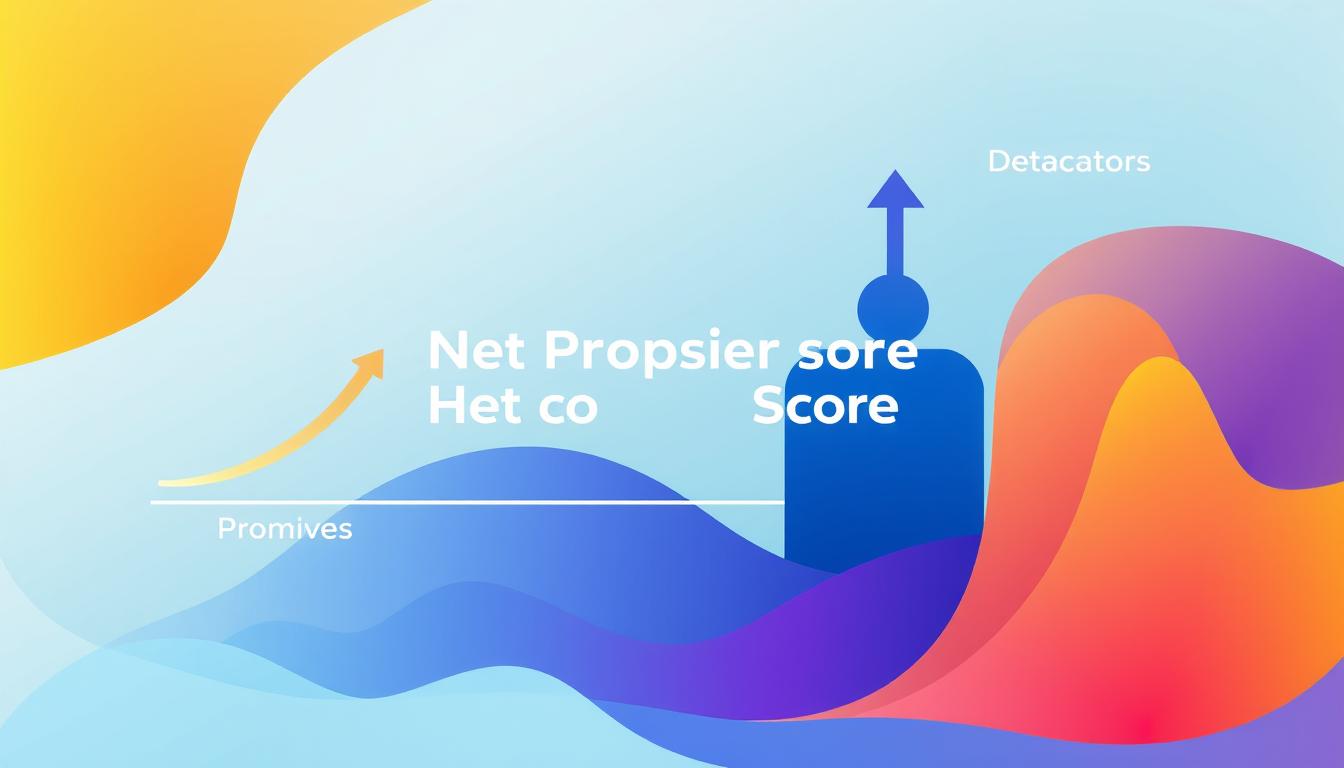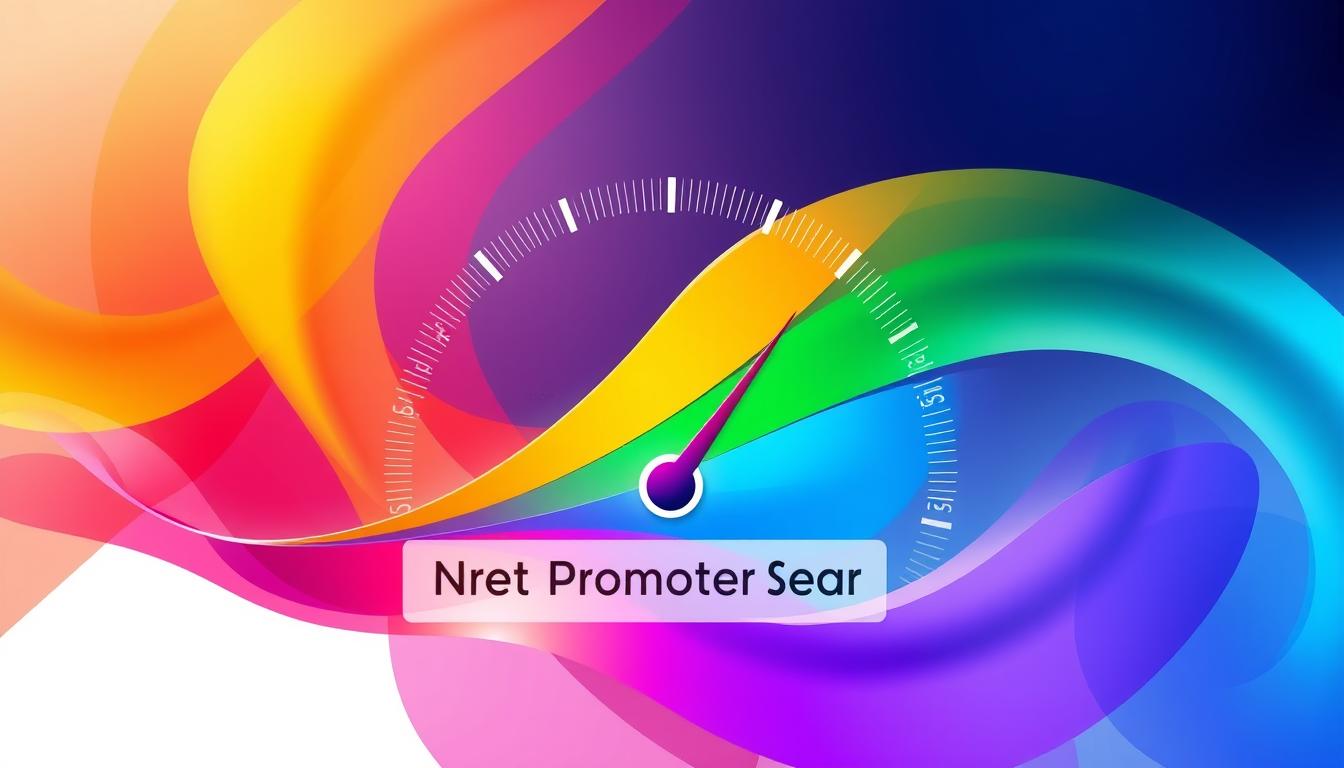In today’s competitive market, leveraging customer satisfaction metrics like Net Promoter Score (NPS) is essential for developing effective referral program strategies. By identifying promoters, we can harness the power of word-of-mouth marketing, turning satisfied customers into enthusiastic brand ambassadors. Our focus is to use NPS feedback to fuel loyalty program development, driving organic growth through referrals.
Understanding how to integrate NPS into our marketing strategies is pivotal. Customer satisfaction not only fosters loyalty but also forms the backbone of any successful referral program. By closely examining NPS data, we can pinpoint the most satisfied customers who are likely to recommend our products or services, ultimately enhancing our overall business growth.
Key Takeaways
- NPS feedback is crucial for identifying promoters.
- Happy customers can drive organic growth through referrals.
- Customer satisfaction is foundational for loyalty program development.
- Effective referral program strategies are built on reliable NPS data.
- Integrating NPS in marketing strategies enhances business growth.
Understanding Net Promoter Score
As businesses aim to enhance their customer experience measurement, understanding *Net Promoter Score* (NPS) becomes pivotal. This simple yet powerful customer loyalty metric gives insights into customer satisfaction and their likelihood to recommend a company’s products or services.
What is Net Promoter Score?
NPS is a customer loyalty metric derived from asking customers a single question: “How likely are you to recommend our business to a friend or colleague?” Responses are collected on a scale of 0 to 10, and customers are categorized into three distinct groups:
- Promoters (score 9-10): Loyal enthusiasts who will keep buying and refer others, fueling growth.
- Passives (score 7-8): Satisfied but unenthusiastic customers who are vulnerable to competitive offerings.
- Detractors (score 0-6): Unhappy customers who can damage your brand and impede growth through negative word-of-mouth.
History and Importance
The concept of *Net Promoter Score* was introduced by Fred Reichheld in 2003, published through Bain & Company and Satmetrix. Since its inception, NPS has been widely adopted across numerous industries as a fundamental customer experience measurement tool.
The importance of NPS lies in its simplicity and the predictive nature of the results, serving as a strong indicator of long-term business growth. It provides a direct correlation between improved NPS scores and customer loyalty, leading to increased revenue.
By consistently implementing NPS, businesses can identify areas of improvement, turning detractors into promoters. Thus, using NPS as a customer experience measurement offers a strategic advantage in fostering customer loyalty and achieving sustainable growth.
The Role of Feedback in Referral Programs
The value of customer feedback cannot be overstated in the lifecycle of a referral program. By gathering and analyzing customer feedback, we gain critical insights into customer satisfaction levels, which directly influence referral marketing effectiveness. The feedback serves as a mirror reflecting what customers love about our products and services and what needs improvement.
For a referral program to thrive, understanding the voices of our customers is key. Happy customers often become our most ardent advocates, championing our brand through client advocacy. This organic promotion is invaluable and relies heavily on transparent and actionable customer feedback.
Implementing a structured feedback system allows businesses to fine-tune their products and services, addressing any potential issues before they escalate. Consequently, this ongoing refinement boosts customer satisfaction and increases the likelihood of referrals. In fact, feedback-driven adjustments often lead to creating targeted referral marketing campaigns that resonate deeply with our audience.
Here’s a breakdown of how feedback influences various aspects of referral programs:
| Aspect | Impact |
|---|---|
| Product Enhancement | Identifies areas needing improvement, leading to better customer experiences and more referrals. |
| Customer Service | Refines support processes, ensuring issues are resolved quickly, turning satisfied clients into advocates. |
| Marketing Strategies | Informs targeted campaigns, maximizing the reach and effectiveness of referral efforts. |
| Brand Loyalty | Strengthens relationships with customers, fostering a community of loyal brand promoters. |
In conclusion, leveraging customer feedback within referral programs is not just beneficial but essential. By listening to our customers, we not only enhance our offerings but also build a robust network of advocates who propel our brand forward through genuine recommendations.
Collecting NPS Data Effectively
Effective NPS survey creation is crucial to gathering actionable feedback and improving customer loyalty. By following survey best practices, businesses can optimize feedback collection and achieve meaningful insights.
Designing Your NPS Survey
When it comes to designing an NPS survey, there are several key elements to consider:
- Question Formulation: Ensure the primary question is clear and concise: “On a scale of 0-10, how likely are you to recommend our product/service to a friend or colleague?”
- Scoring Interpretation: Understand the scale where 0-6 are Detractors, 7-8 are Passives, and 9-10 are Promoters. This classification helps in identifying areas of improvement.
- Timing: Choose the right moment for feedback collection. Avoid peak times when customers might be too busy to respond thoughtfully.
Survey Distribution Channels
Choosing the right channels for distributing your NPS surveys is essential for maximizing response rates. Here are some effective channels:
- Email: A widely adopted method offering convenience and the potential for detailed responses.
- SMS: Ideal for quick surveys and high open rates, ensuring timely feedback collection.
- In-app: Direct and non-intrusive, perfect for reaching users during their engagement with your service.
- Website: Integrated surveys can capture immediate feedback from visitors.
By adhering to survey best practices, we can harness these channels effectively to drive higher engagement rates and more accurate NPS data.
| Distribution Channel | Benefits | Drawbacks |
|---|---|---|
| Detailed feedback, convenience | Possible low response rate, may get filtered as spam | |
| SMS | High open rates, quick responses | Limited space for detailed feedback |
| In-app | Direct, captures user in-the-moment | May interrupt user experience |
| Website | Immediate feedback from visitors | Only captures active website users |
Interpreting NPS Feedback
Understanding the nuances of NPS feedback is essential for maximizing its benefits. A thorough NPS analysis can reveal valuable insights into customer sentiment and guide your strategic decisions. Let’s delve into the methods of calculating NPS and the importance of benchmarking against industry standards.

NPS Calculation Methods
The Net Promoter Score (NPS) is calculated by subtracting the percentage of Detractors from the percentage of Promoters. This simple yet effective formula helps in measuring customer sentiment. Here’s how you can calculate NPS:
- Conduct a survey asking customers to rate their likelihood to recommend your brand on a scale of 0 to 10.
- Classify respondents into Promoters (9-10), Passives (7-8), and Detractors (0-6).
- Find the percentage of Promoters and Detractors.
- Subtract the percentage of Detractors from the percentage of Promoters.
This calculation provides a clear picture of customer sentiment and helps in identifying both your brand advocates and those needing extra attention.
Benchmarking NPS
After conducting an NPS analysis, it’s crucial to benchmark your score against industry standards. Benchmarking offers a comparative view and sets a context for your customer experience performance. Industry benchmarks are vital as they allow us to:
- Understand where we stand in comparison to competitors.
- Identify areas for improvement and set realistic goals.
- Develop targeted strategies to exceed industry expectations.
Here’s how industry benchmarks can be used effectively:
| Industry | Average NPS | Top Performer NPS |
|---|---|---|
| Technology | 50 | 70 |
| Healthcare | 45 | 65 |
| Finance | 35 | 55 |
Comparing your NPS with these benchmarks enables you to gauge your position within the market and create actionable strategies to enhance customer experience. Conduct a thorough NPS analysis regularly, and leverage these insights for continuous improvement and maintaining a competitive edge.
Integrating NPS with Referral Programs
Integrating NPS feedback with referral programs involves more than just gathering data; it requires a unified strategy to foster customer advocacy and drive successful referral marketing alignment. By aligning the goals of NPS and referral programs, businesses can create a seamless experience for promoters, leading to increased referrals and enhanced customer loyalty.
Aligning Goals
Aligning the goals of NPS feedback and referral programs is crucial for ensuring both initiatives work in harmony. The primary objective here is to leverage positive customer experiences to boost referral marketing. Here are a few key steps for achieving this alignment:
- Identify Promoters: Use NPS data to pinpoint your most enthusiastic customers who are likely to participate in referral programs.
- Customize Incentives: Offer tailored incentives that appeal to your promoters, fostering genuine customer advocacy.
- Track Performance: Continuously monitor the impact of NPS-driven referrals to refine and enhance your strategies.
Automating Integration
Marketing automation plays a significant role in streamlining the integration of NPS data into referral marketing platforms. Automation tools help ensure efficiency and personalization, making it easier to manage and promote referrals among likely promoters. Consider the following aspects for effective automation:
- Seamless Data Integration: Use marketing automation tools to automatically sync NPS feedback with your referral marketing system.
- Personalized Communication: Leverage automation to send customized referral invitations based on individual NPS scores.
- Performance Analytics: Utilize automated reports to track referral performance and make data-driven decisions.
The integration of NPS with referral programs, facilitated by goal alignment and marketing automation, not only enhances customer advocacy but also drives a more efficient and personalized approach to promoting referrals.
Creating Incentives for Promoters
Designing effective incentive programs for promoters identified through Net Promoter Score (NPS) surveys is crucial for driving customer engagement and advocacy. Successful incentive programs can significantly enhance customer loyalty and inspire more frequent referrals.
- Discounts: Offering exclusive discounts can motivate promoters to continue valuing and spreading positive word-of-mouth about our brand.
- Exclusive Access: Providing early access to new products or services rewards customer advocacy and makes promoters feel valued.
- Loyalty Rewards: Loyalty points or rewards schemes can encourage repeated interactions and sustained advocacy from our most passionate customers.
Initiating these incentive programs also leverages the psychological impact of rewards. Recognized and rewarded customers are more likely to engage in advocacy, ultimately driving higher referral rates.
Increased engagement and heightened customer advocacy result in numerous benefits, such as:
- Higher customer retention rates
- Improved brand reputation
- Enhanced organic growth through word-of-mouth referrals
By crafting well-thought-out customer advocacy incentives, we can harness the full potential of our promoters, converting their satisfaction into actionable growth strategies.
Implementing NPS Software
In today’s competitive market, leveraging advanced NPS tools can significantly enhance your company’s ability to track and analyze customer feedback. Effective implementation of customer feedback software ensures that you are maximizing insights to drive improvements and boost referral programs.
Features to Look For
Choosing the right NPS tools involves evaluating several critical features. First, real-time analytics are essential for obtaining immediate insights from customer feedback. An easily navigable analytics dashboard helps streamline the analysis process, enabling managers to make swift, informed decisions.
Automated survey distribution enhances the efficiency of collecting customer opinions without manual intervention. Moreover, rich data dashboards offer deep dive capabilities into customer responses, helping identify trends and pain points.
Top NPS Software Providers
Several industry leaders provide comprehensive NPS tools and customer feedback software. Here are some of the top options:
- SurveyMonkey: A versatile platform known for its robust survey creation tools and analytics dashboard features.
- Qualtrics: Offers tailored solutions with advanced real-time analytics, encompassing a wide array of feedback mechanisms.
- Medallia: Renowned for its powerful customer feedback software that integrates easily with existing systems to improve customer experience continuously.
- Delighted: Simplifies NPS survey creation and provides an intuitive analytics dashboard for immediate insights.
- Wootric: Specializes in NPS tools designed for quick implementation and rapid feedback analysis.
Success Stories: Brands Using NPS for Referrals
NPS success stories reveal how effective net promoter score analysis can be in transforming brand loyalty into powerful referral tools. Here, we present two compelling referral program case studies that showcase the significant outcomes achieved by top brands.
Case Study 1
One of the most renowned NPS success stories comes from Airbnb. By leveraging their NPS data, Airbnb identified a community of highly passionate and loyal users. These insights enabled Airbnb to create a targeted referral program aimed specifically at their promoters. They provided personalized incentives, resulting in a substantial increase in referrals and a notable rise in new user acquisition.
Through this strategy, Airbnb not only boosted their referral rates but also saw a significant enhancement in brand loyalty among existing users. The data-driven approach facilitated by applying NPS was pivotal in scaling their referral efforts with maximum effectiveness.
Case Study 2
Dropbox’s referral program case studies highlight another successful application of NPS. Known for their strategic excellence, Dropbox used NPS feedback to hone in on their most enthusiastic users. By tailoring their referral incentives towards these user groups, they created a viral loop that exponentially increased their user base.
The program’s success was quantifiable: Dropbox experienced a 60% increase in sign-ups, driven by user referrals alone. This approach not only amplified their customer acquisition efforts but also strengthened overall brand loyalty. The seamless integration of NPS insights into their referral program strategy proved to be a game-changer.
| Company | Strategy | Results |
|---|---|---|
| Airbnb | NPS-driven personalized incentives | Increased referrals and enhanced brand loyalty |
| Dropbox | Referral incentives tailored to promoters | 60% increase in sign-ups through referrals |
These proven NPS success stories demonstrate how integrating NPS data with referral programs can yield remarkable outcomes, fostering deeper brand loyalty and substantial user growth.
Common Challenges and Solutions
Implementing an effective referral program based on Net Promoter Score (NPS) feedback comes with its own set of challenges. One primary issue is low response rates, which can significantly impact the validity of your data. Many businesses struggle to gather enough responses to make informed decisions. Another common difficulty involves interpreting the feedback. Sometimes, the feedback received may be unclear or too vague to act upon directly.
To address the NPS challenges of low response rates, consider simplifying your NPS survey. Make it short and accessible to increase the chances of customer participation. Leverage multiple channels, such as email, SMS, and social media, to reach a wider audience. Offering small incentives, like discounts or reward points, can also encourage more customers to take part in the survey.
Overcoming feedback issues requires a methodical approach. Train your team to interpret both quantitative and qualitative feedback accurately. Categorize the feedback into actionable insights and follow up promptly with customers to clarify any vague responses. Use sentiment analysis tools to help decipher the tone of the feedback and make more informed decisions.
When it comes to referral program optimization, continuous monitoring and tweaking are essential. Regularly update your NPS survey and referral program based on new insights and changing customer needs. By consistently addressing NPS challenges and implementing best practices, you can enhance both your feedback collection process and the effectiveness of your referral programs.
FAQ
What is Net Promoter Score?
Net Promoter Score (NPS) is a customer loyalty metric designed to measure how likely customers are to recommend a business to others. It classifies respondents into promoters, passives, and detractors based on their response to the survey question: “On a scale of 0-10, how likely are you to recommend our company to a friend or colleague?
How can NPS feedback be used to build referral programs?
NPS feedback helps identify promoters who are satisfied customers and likely to refer your brand to others. By targeting these promoters through tailored referral program strategies, businesses can drive organic growth and improve customer satisfaction, leveraging the insights from NPS data to enhance their referral marketing efforts.
Why is customer feedback important in the lifecycle of a referral program?
Customer feedback provides critical insights into satisfaction levels, areas needing improvement, and potential for client advocacy. This feedback is essential for crafting effective referral marketing campaigns, improving offerings, and building a community of brand loyalists who actively advocate for your business.
How should I design my NPS survey?
When designing your NPS survey, focus on clear and concise question formulation, appropriate timing for distribution, and ensuring the scale accurately captures customer sentiment. Using multiple distribution channels like email, SMS, and in-app surveys can help maximize response rates and collect quality feedback.
What are the methods for calculating and interpreting NPS?
NPS is calculated by subtracting the percentage of detractors from the percentage of promoters. Interpreting the score involves understanding customer sentiment and using it to derive actionable insights. Benchmarking against industry standards also provides context for your company’s performance in customer experience measurement.
How can NPS be integrated with referral programs?
Integrating NPS with referral programs involves aligning the goals of both initiatives to enhance customer advocacy. Automation plays a key role, enabling efficient data integration and a personalized approach to promoting referrals among promoters through marketing automation tools.
What types of incentives can be offered to promoters?
Incentives for promoters can include discounts, exclusive access, loyalty rewards, or other tailored rewards that encourage customer advocacy. A well-designed incentive program increases engagement and referral rates by making customers feel valued and appreciated.
What features should I look for in NPS software?
Can you provide examples of brands successfully using NPS for referrals?
Yes, examining success stories such as Airbnb and Apple, which have leveraged NPS in their referral programs, reveals effective strategies for converting promoters into active referral sources. These case studies highlight the impact of NPS-driven insights on brand loyalty and revenue growth.
What are common challenges in using NPS for referral programs, and how can they be overcome?
Common challenges include low response rates, difficulty interpreting feedback, and optimizing referral programs. Solutions involve improving survey design and distribution methods, accurately analyzing feedback through advanced analytics, and continuously refining referral strategies based on NPS insights.
Related Posts
- NPS and the Future of CX: Trends and Innovations
- How to Use NPS Data to Reshape Your Customer Support Strategy – NPS in Customer Service
- How NPS Can Help Identify Key Moments of Truth – NPS and Customer Journey
- NPS as a Key Driver for Continuous Journey Improvements – NPS and Customer Journey
- How NPS Scores Vary Across Different Stages of the Journey – NPS and Customer Journey
- The Role of Customer Feedback in Increasing NPS Scores – NPS and Customer Feedback Loops
- Managing Promoters: Turning Positive Feedback into Action
- The Relationship Between NPS and Business Units in Enterprises – NPS for Enterprise Businesses






